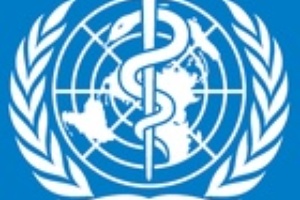WHO: More evidence and better diagnostics needed before redefining severe forms of drug-resistant TB
There is currently insufficient evidence to adopt new case definitions for drug-resistant TB.
23 March 2012 | Geneva - Reports of tuberculosis (TB) cases with severe patterns of drug resistance are increasing, said experts who attended a WHO meeting in Geneva on 21-22 March. Participants stressed that the emergence of drug resistance should be a wake-up call for Ministries of Health. The group urged the global TB community to make greater efforts to prevent drug resistance and scale up provision of appropriate care and management to avoid a scenario where TB becomes incurable.
Insufficient evidence
The meeting concluded that there is currently insufficient evidence to adopt new case definitions for drug-resistant TB. Drug susceptibility testing (DST), which is key to defining new levels of drug resistance, lacks accuracy for several of the drugs that are used to treat multi drug-resistant (MDR) and extensively drug resistant (XDR)-TB. Secondly, there is insufficient correlation of DST results with clinical response to treatment for several drugs currently used to treat XDR-TB. Thirdly, new drugs are currently undergoing clinical trials, and could prove effective against drug resistant strains. The meeting urged diagnostics companies and TB laboratories to develop better diagnostic tests and also agreed that WHO and technical partners should develop more detailed guidance on XDR-TB treatment.
Prior to results from randomized controlled trials, which are not expected for at least four years, participants called on WHO to lead a process with partners to improve the quality and quantity of observational data on the management of cases of severe forms of drug resistance. These data should be collected in a standardized manner which is essential for stronger future policy decisions on the management of drug resistant TB.
Several new drugs belonging to new classes of anti-mycobacterial agents are under development for treating TB, but until they are shown to be effective in properly conducted clinical trials, WHO cannot include them in recommendations for treatment regimens. WHO is therefore leading a process to accelerate their introduction into clinical settings. The meeting also advised pharmaceutical companies to collaborate in the early development of combination regimens.
Compassionate use of new drugs
Meeting participants urged the Organization to facilitate the "compassionate" use of new drugs: access to drugs that have gone through clinical trials, but which are not yet readily available in countries. WHO was asked to help facilitate the necessary contact between National TB Control Programmes, Ministries of Health and pharmaceutical companies to expand access to investigational new drugs. WHO advises strongly against simply adding a single new drug to a failing regimen. Countries were therefore strongly advised to put in place or strengthen existing regulatory frameworks to enable "compassionate" use and prevent misuse – and premature loss - of these drugs.
Background
Within a year of the first reports of XDR-TB in 2006, 2 cases were reported from Italy that had resistance to both first and second-line treatments. In 2009, 15 TB patients in Iran were reported to be resistant to all anti-TB drugs tested - prompting researchers to coin new terms “extremely drug resistant” (“XXDR-TB”) and “totally drug-resistant TB” (“TDR-TB”). In 2012, four patients in India were described as having “totally drug resistant” tuberculosis. Media subsequently reported a further eight such cases.
In 2009, WHO led the response to the emergence of TB drug resistance through the Beijing Call for Action and the approval of the World Health Assembly Resolution 62.15, with 193 Member States present. This signalled a crucial step forward in countries’ commitment to, and planning for, the treatment and control of MDR-TB. However, planning, funding, and implementation have fallen behind the milestones that were set. In 2010, only 20 out of 36 countries with a high burden of TB or MDR-TB had at least one laboratory capable of performing TB culture and DST per 5 million people. Much of Africa and the Indian subcontinent remain poorly served.
Additional information
- Multi-drug resistant tuberculosis (MDR-TB): TB resistant to both of the main first line drugs, isoniazid and rifampicin.
- Extensively drug resistant tuberculosis (XDR-TB): MDR-TB with additional resistance to any of the injectables (amikacin, kanamycin or capreomycin), plus resistance to any of the fluoroquinolones.


